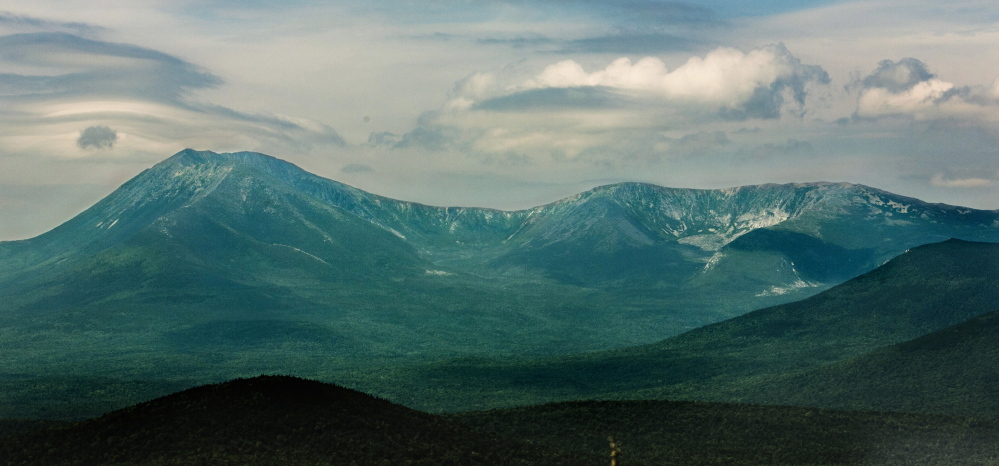Members of Maine’s congressional delegation will be watching closely later this month as residents of the Katahdin-area towns of East Millinocket and Medway vote on their support for a proposed north woods national park and recreation area.
And the delegation should be paying attention. The proposed Katahdin Woods and Waters National Park would take advantage of the Katahdin area’s significant natural assets, packaging them in a way that has proven successful at other national parks, with little to no downside, even if it doesn’t completely live up to its promise.
However, statements on the park issue from Sens. Angus King, an independent, and Susan Collins, a Republican – and, more recently, from 2nd District Republican Rep. Bruce Poliquin – have followed nimbly the public sentiment in the Katahdin region. For years, the park proposal was dead on arrival to residents who saw papermaking as the area’s once and future savior, and the delegation followed suit. Now that the region’s view on the park proposal is softening, Maine’s representatives in Washington appear to be opening to the idea.
THE POLL
But it shouldn’t only be the Katahdin region that they are listening to. A north woods national park would affect and benefit a much wider swath of the state, from Dover-Foxcroft and Bangor, up through Lincoln and Patten, and on to Presque Isle.
And within that large, mostly rural area, the proposal is very popular. Elliotsville Plantation Inc., the group behind the park proposal, released a poll June 2 showing 67 percent of the voters in the 2nd Congressional District in favor, with just 25 percent opposed.
The poll, conducted by a respected pollster who also works for Collins, showed broad support for the park among almost all demographic groups and party affiliations.
The only people surveyed who were against the park were those who self-identified as “very conservative,” and even then, the split was within the poll’s margin of error.
That support shows most residents see the proposal for what it is – a potential boon to the area.
THE PROPOSAL
The proposal now calls for a 75,000-acre national park between Baxter State Park and the East Branch of the Penobscot River. On the other side of the river, there would be a 75,000-acre recreation area.
The park would be open to fishing, hiking and paddling while the recreation area would allow snowmobiling and hunting, too.
The 150,000-acre boundary would be drawn in the legislation establishing the park. Elliotsville Plantation – the creation of the family of Burt’s Bees founder Roxanne Quimby and now run by her son, Lucas St. Clair – would donate 100,000 acres. The rest would be purchased only as landowners become willing to sell. No land would be taken through eminent domain.
The park would be funded in part by a $40 million endowment, which, along with gate fees, would pay more than half of the park’s annual operating budget.
That’s the plan as presented by Elliotsville Plantation. But there is also room for local input if and when the planning process moves forward.
THE PURPOSE
A park would create 450 to 1,000 jobs, according to a study funded by Elliotsville Plantation and reviewed by four of Maine’s top economists.
It would be another major draw for Maine’s tourism industry, bringing more people up the I-95 corridor, a fact not lost on the Bangor City Council, which supports the park.
It would provide a companion to Acadia National Park and its 2.5 million annual visitors, just two hours away, as well as to Baxter next door. The proposed new park is a much different landscape than Acadia – think mountains and moose instead of lighthouses and lobsters – and a more accessible experience than the wild backwoods of Baxter.
And with the significant marketing of the National Park Service behind the park, millions more people would hear about this underappreciated area.
THE OPPONENTS
Finally, the proposed new park would have no impact on the industries that have traditionally supported the area: papermaking and forestry.
Those industries have declined because of forces far beyond Maine. They may return, in numbers far smaller than before, or they may not. But that’s got nothing to do with what happens in the area of the proposed park, which if harvested for timber would only support up to 21 jobs and make up less than 1 percent of Maine’s timber haul.
Sure, a park wouldn’t fully replace the jobs that have been lost. But that’s not the choice here.
The choice is whether to accept a plan with a level of investment that would be the envy of mill towns throughout Maine, and would take full advantage of the Katahdin region’s natural resources, or to continue along a path that has led to high unemployment and empty storefronts.
Much of central and northern Maine have made their decision. Residents of the Katahdin region are coming around – the plan has been endorsed by Medway selectmen as well the local chamber of commerce and Rotary club.
Maine’s congressional delegation should get on board, too.
Send questions/comments to the editors.



Success. Please wait for the page to reload. If the page does not reload within 5 seconds, please refresh the page.
Enter your email and password to access comments.
Hi, to comment on stories you must . This profile is in addition to your subscription and website login.
Already have a commenting profile? .
Invalid username/password.
Please check your email to confirm and complete your registration.
Only subscribers are eligible to post comments. Please subscribe or login first for digital access. Here’s why.
Use the form below to reset your password. When you've submitted your account email, we will send an email with a reset code.